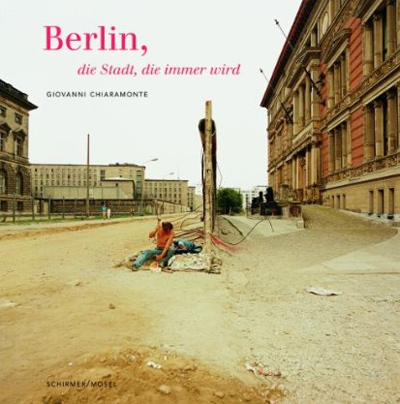Review: Berlin by Giovanni Chiaramonte

East Germany’s national anthem started out stating that “From the ruins risen newly, to the future turned, we stand.” For those visiting from West Germany (or any other Western country), this seemed like a bold claim, a very odd description of a place that looked, well, ruined. Mind you, some of the World War II ruins had indeed been replaced, but many had been left standing. When I visited Dresden in 1987, one of the main palaces in the city center was still a burned-out shell. It’s true, many of the ruins had been removed, and new buildings had been erected - just like in the West, early 1950s East German architecture was mostly an insulting, almost inhumane mess - but it was obvious that not much - if any - money was being spent on keeping things up. And you’d walk into some back alley by mistake maybe and see bullet marks on the walls. (more)
It’s one of those supreme ironies of the fall of the Berlin Wall that large parts of that city - as well as countless others - would really rise from the ruins and shabby architectural monstrosities the Eastern German regime - describing itself as “really existing socialism” (I’m not making this up), the “worker’s paradise” - had erected. Nowhere was the change to come to Berlin more obvious in the city’s center, where a wide waste land - the location of the wall and the death strip with its automated shooting machines and landmines (intended to prevent anyone from trying to relocate from said paradise to the capitalist hell hole next door) - separated what used to be West from East Berlin. Needless to say, some of the solutions placed on that waste land leave a lot to be desired - Berlin’s Sony Center is a tacky, nauseating hypercapitalist theme park. But still, if there was any place where East and West Germany - and, by extension, Eastern and Western Europe - would literally mend the wounds of separation it was in the very center of Berlin.
“The wounds of separation” sounds like one of those phrases that the mostly older German generation would use, but it is an apt phrase for a waste land right in the very center of one of Europe’s major cities. It is very hard to describe if you have not seen it in person. I am fortunate to have seen it from the Western side as well as from its Eastern side (visiting East Berlin, I made sure to see the Wall from there), and to have seen it when there were so many construction cranes that it looked right out of some science fiction movie.
Enters Giovanni Chiaramonte’s Berlin, which not only reminds us that Berlin has a pretty long history and that that history also puts narratives like the one I opened this review with into perspective. With photography taken between 1983 and 2003, the book not only simply covers West and East Berlin and the merging of those parts into the modern city, it also provides context, with images of old and new buildings and ruins. Some of these ruins were recent, some old - with many of the old ones being fake. I’m not making this up - Prussians loved classical Roman building, but they also loved seeing Roman ruins, so they had some custom made.
Architecture can be deceptive - as can be simple narratives (time for a note to self?).
There are older cities than Berlin, but with its most recent history it might just provide the most compelling case for how cities constantly transform themselves. Berlin certainly surprises in many different ways, and it presents a view of Berlin radically different from what we are used to. At times, it feels like the city is being treated as if it was ancient Rome, as if civilization, or maybe just the people, were gone and we were left with only the buildings. If you need further proof that photography can do many things, even in areas where you’d never expect it, have a look at Berlin.
Berlin, photography by Giovanni Chiaramonte, essay by Kurt W. Forster, 144 pages, Schirmer/Mosel, 2010